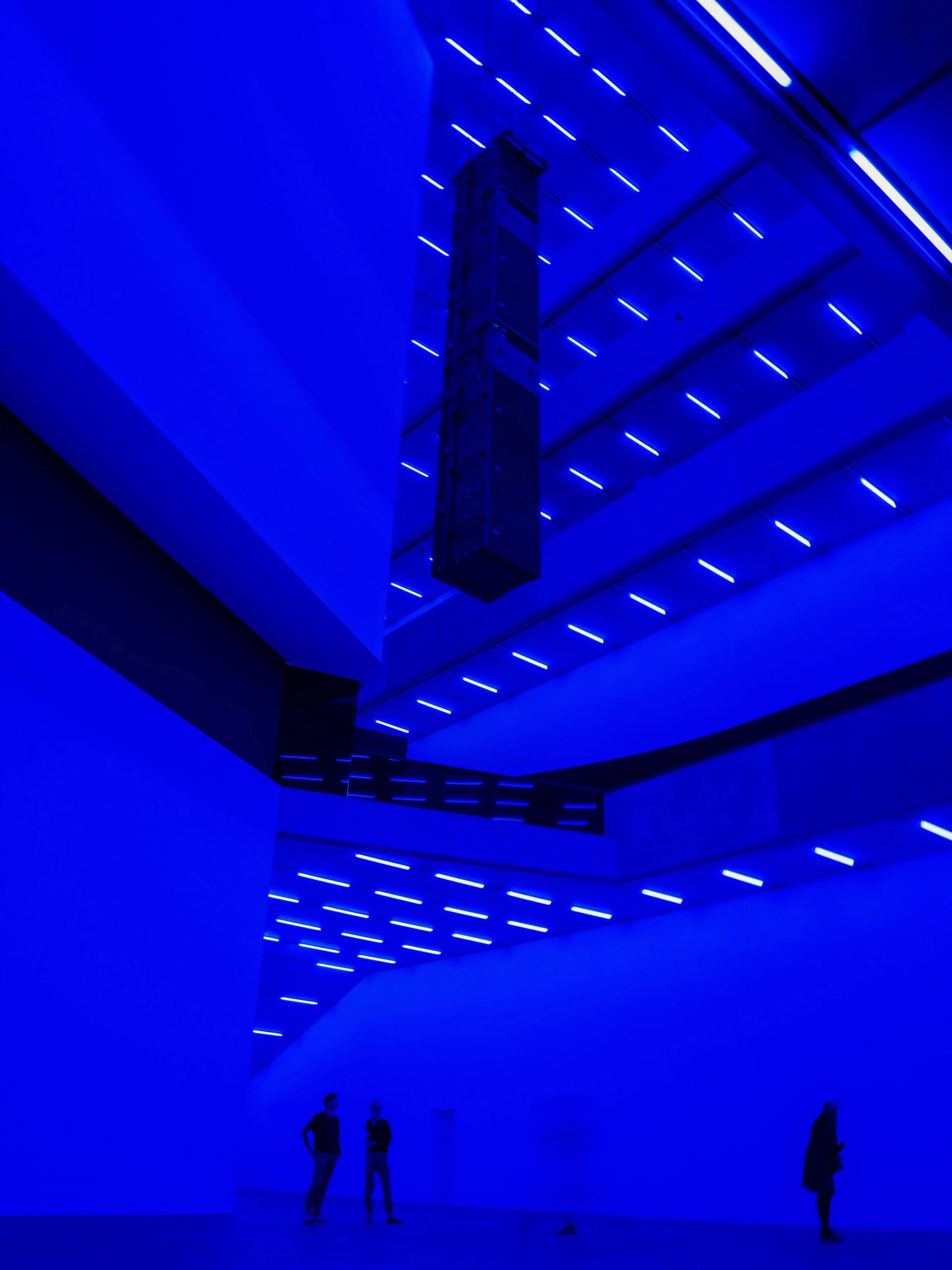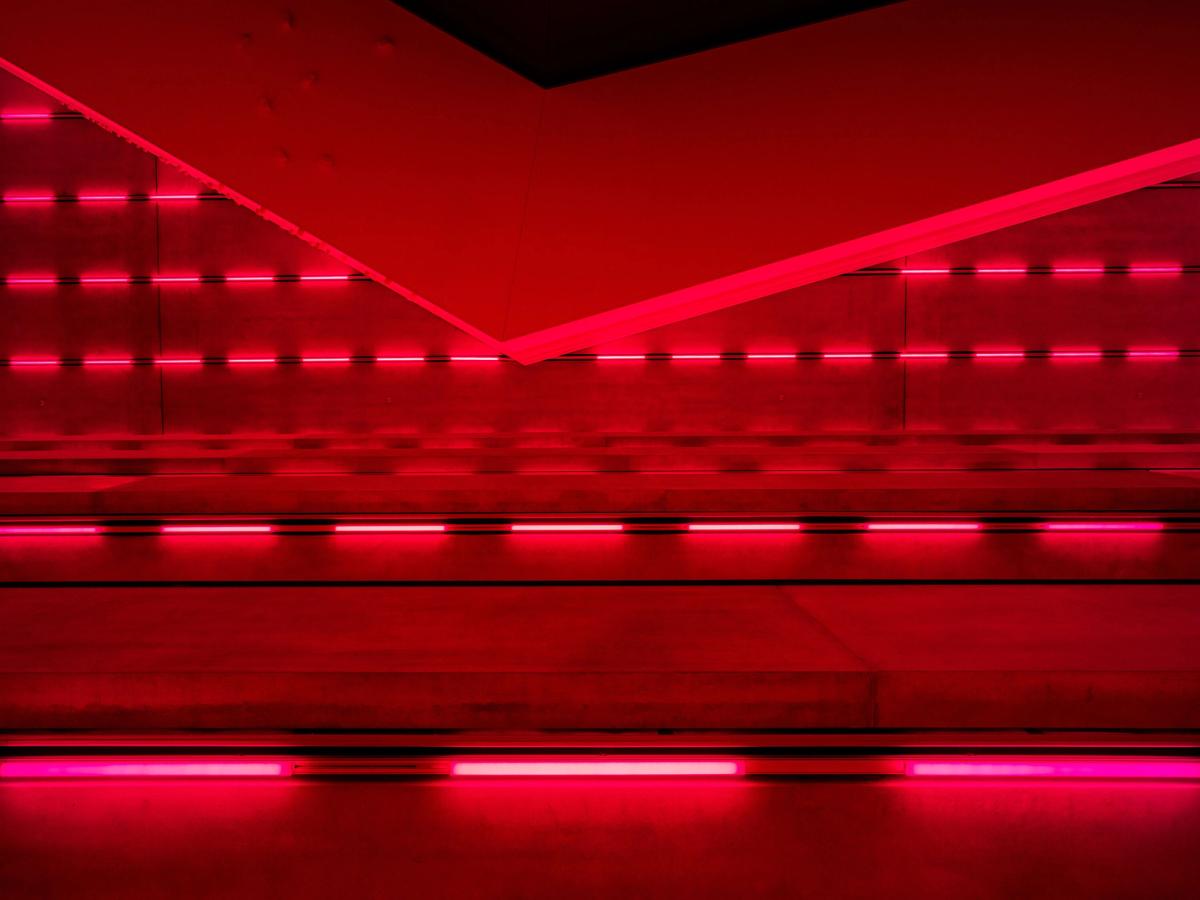The British artist and film-maker Steve McQueen presents his most abstract work to date with the light-and-sound sculpture Bass (2024). The piece marks a compelling turn in the artist’s ongoing exploration of presence and the politics of representation. It premiered at Dia Art Foundation’s outpost in Beacon, New York, last year and is now at the Laurenz Foundation’s Schaulager in Basel, where its new location invites further interpretation and resonance.
McQueen’s collaboration with the two foundations began in 2022, when organisers invited the award-winning film-maker to create a video as the jointly commissioned work. But the piece came to have a more conceptual bend, as McQueen ruminated on the abstract elements of his practice and the transcendental power of light and sound to provoke a meditative state.
The work bathes its environment with changing ambient lighting over a three-hour loop and features a sonic component that references the Middle Passage—the harrowing transatlantic voyage to the Americas endured by enslaved Africans—although viewers are not encouraged to read into the didactics of the piece. McQueen hopes people become “participants”, bringing their own presence and narrative to the experience. (He asks that they refrain from taking photographs in order to be fully present.)
Responsive and fluid
At Dia Beacon, Bass was installed in the museum’s cavernous 30,000 sq. ft basement, with subtle looping pulses of light and sound engulfing the viewer and the space’s minimalist architecture. But McQueen does not view his piece as a fixed composition with specific technical and architectural requirements; rather, it is a sculpture responsive to new meanings depending on where it is displayed.
“There’s a fluidity in the work, because it’s about sound and light, so there’s no place where it cannot work,” he says. “It’s a sculpture that could go anywhere. The specifics of the piece are fluid, because there are no boundaries for sound and light. It will leak into any aspect. There’s no measurement.”
McQueen emphasises that Bass “asks the participant to create feeling within the context of the space” and that viewers “will understand it only when they see it”. It can be installed in a variety of different contexts, since each viewer brings unexpected “sensibilities” to the work. “As an audience member, I feel there is a situation where the viewer can no longer think about themselves,” McQueen says. “You become an important ingredient in the understanding of the piece—you and other people. But I won’t spoil the surprise.”

McQueen says that the viewer is “an important ingredient” in the work Photo: Pati Grabowicz; courtesy of the artist
While McQueen is hesitant to give specifics, he is interested in how viewers will choose to either navigate or remain static in the new space. At the Schaulager, Bass spans three floors of the museum, including the galleries and the full height of the atrium. The space is “the perfect fit”, McQueen says, but the differences in the presentation are “more technological” adjustments. Its ethos remains the same.
Ambient sonic component
Apart from the architectural adaptations made at the Schaulager, there have been no modifications to Bass. It features the same ambient sonic component, which McQueen produced with the bassist Marcus Miller and other musicians who played both electric and acoustic basses and a ngoni, a traditional West African string instrument.
“A majority of the time when we listen to sound or music, it’s through an iPhone or something more internal, but this is definitely external,” McQueen says. “It is a very visual presentation of sound and colour. I’m excited about how that transformation will take place at the Schaulager.”
Dia, in collaboration with Laurenz and the designer Irma Boom, published the book Steve McQueen: Bass (2024) to accompany the premiere of the work. A second publication released earlier this month focuses on the presentation at the Schaulager, which was a “hand-in-glove situation” for the work, according to McQueen, and provides “a critical reaction to Bass as it was at Dia”.
McQueen rose to fame as a Turner Prize winner in 1999 and represented Britain in the 2009 Venice Biennale. He later earned an Academy Award for his film 12 Years a Slave (2013), becoming the first Black director to win Best Picture at the Oscars. McQueen’s work is held in major collections worldwide, including at the Metropolitan Museum of Art and the Museum of Modern Art in New York.
• Steve McQueen: Bass, Schaulager, Basel, until 16 November


